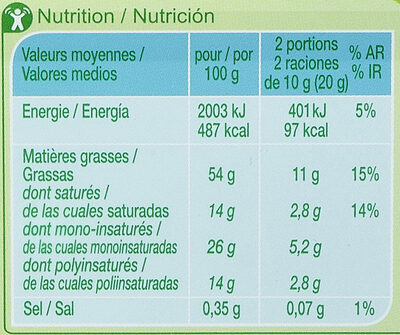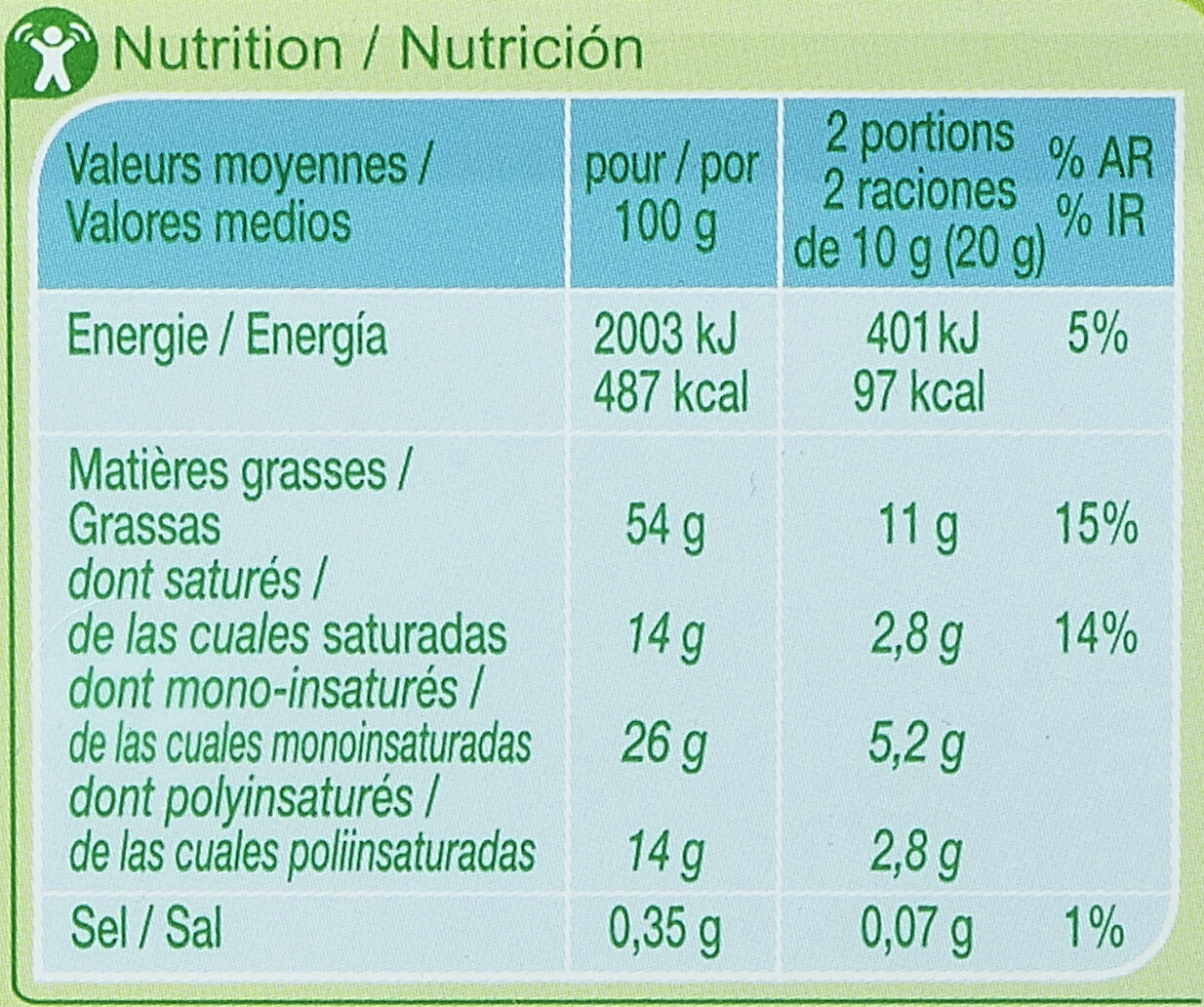Omega 3 - Matière Grasse à Tartiner - Carrefour - 500 g
Aquesta pàgina del producte no està completa. Podeu ajudar a completar-la editant-la i afegint-hi més dades a partir de les fotos ja disponibles, o fent-ne més amb l'aplicació de androide o iPhone / iPad. Gràcies!
×
Algunes de les dades d’aquest producte les ha proporcionat directament el fabricant Carrefour.
Codi de barres: 3560070246151 (EAN / EAN-13)
Nom comú: Margarina tres cuartos con 60% de materia grasa, alto contenido de ácidos grasos omega-3 y alto contenido de vitaminas A, D y E.
Quantitat: 500 g
Empaquetament: Plàstic, en:Metal, en:Fresh, en:Seal, en:Tray
Marques: Carrefour
Categories: Aliments i begudes amb base vegetal, Aliments amb base vegetal, Greixos, Productes per untar, Productes amb base vegetal per untar, Productes salats per untar, Greixos d'untar, Greixos vegetals, Margarina, en:Light margarines, en:Margarines high in omega 3
Etiquetes, certificacions, premis:
en:Sustainable, Omega-3, Oli de Palma Sostenible, Punt verd, Alt en Omega 3, Rich in vitamin A, Triman, fr:Engagés, fr:Entrepreneurs

Productor: Fabriqué en Espagne par Doccas Food S.L., RGSEAA: 16.004659/V pour INTERDIS.
Codi de traçabilitat: EMB B:00419
Botigues: Carrefour, carrefour.fr
Matching with your preferences
Altres dades
Altres dades: 500 g e %IR Alto contenido de vitaminas A, D, E
Preparació: La matière grasse à tartiner Carrefour à 50% de matière grasse est idéale à tartiner dès la sortie du réfrigérateur, ainsi que pour les cuissons douces ou à couvercle fermé. Déposée après cuisson, elle accompagnera également viandes, poissons et légumes vapeur.
Avís: Ne pas frire. Ne pas congeler.
Condicions de conservació: A consommer de préférence avant le/ N° de lot : voir sur le couvercle. A conserver entre 0ºC et +6ºC, bien refermer l'emballage après utilisation.
Servei al client: Interdis - TSA 91431 - 91343 MASSY Cedex - France
Report a problem
Fonts de dades
Producte afegit per openfoodfacts-contributors
Última modificació de la pàgina del producte per tasja.
La pàgina del producte, també editada per beniben, carrefour, driveoff, ecoscore-impact-estimator, fpdsurveys, inf, jeremy64, kiliweb, musarana, org-carrefour, packbot, quechoisir, quentinbrd, scanbot, sebleouf, segundo, yuka.WDRKUlBhNDZqL1E0dFBNN29qbllwOU56M0xDTlpFYW5EUEl6SVE9PQ.













